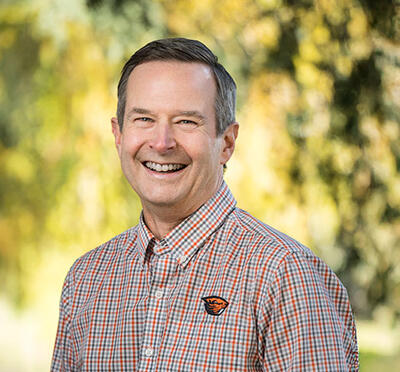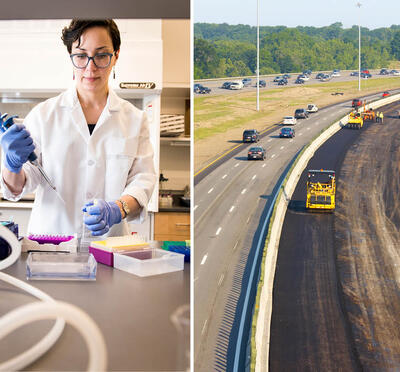Brian Staes moved to Oregon from Florida this past spring to pursue his doctorate in civil engineering with a transportation emphasis at Oregon State University. One of the first things he did upon arrival was visit the coastal town of Seaside to envision people evacuating in the event of a tsunami.
“You can simulate different individuals’ decision-making processes to determine how much it would take for a random person to walk from wherever they are to evacuate,” Staes said.
Staes’ research looks at transportation from a human mobility perspective, examining how people evacuate areas threatened by natural hazards, such as tsunamis, hurricanes, and wildfires. While primarily focusing on pedestrians, he also studies highway systems during evacuations.
“There’s a lot of similarities among traffic moving, humans moving, and bikes moving,” Staes said. “Diagrams show that these things kind of overlap and look the same.”
Staes earned his bachelor’s in civil engineering from Florida Gulf Coast University and joined the American Society of Civil Engineers. His decision to study civil engineering and transportation came naturally; his father is a roadway design engineer, and his mother works for a transportation research facility at the University of South Florida. In 2018, Staes started his master’s in civil engineering at USF.
“I figured I’d get a master’s degree and see where it takes me,” Staes said. “I told myself if I like the research, I’ll just keep going.”
At USF, Staes met Robert Bertini, now professor and head of the School of Civil and Construction Engineering in the College of Engineering at Oregon State. At the time, Bertini directed the USF-adjacent Center for Urban Transportation Research, where Staes worked as a graduate research assistant collecting and interpreting data on highway networks.
For two years, Bertini and Staes collaborated on projects, including Staes’ thesis — an analysis of a bottleneck that formed on Florida’s Turnpike during the evacuation of Hurricane Irma — which they published in the Journal of the Transportation Research Board in 2021. For this paper, Staes received a Transportation Research Board Young First Author Best Paper Award as well as the Milton Pikarski Memorial Award from the Council of University Transportation Centers, which recognizes the best science and technology master’s thesis within transportation studies annually. Staes’ collegiality with Bertini also set the stage for his move to Corvallis.
“Dr. Bertini got his job at Oregon State while I was still finishing my master’s,” Staes said. “Once he left, he became my co-advisor along with another professor at USF. Then, I finished my degree at home in Florida because everything was virtual, and he said, ‘Hey, I’m moving to Oregon; you’re welcome to come finish your Ph.D.’ I said, ‘Let’s do it!’”
Now, finished with coursework, Staes is focusing on his dissertation, co-advised by Bertini and Haizhong Wang, associate professor of transportation engineering and an expert in traffic flow simulations through agent-based modeling. Agent-based models, which examine the behavior of individuals based on location and other variables, can be used in transportation to gain insight on how human behavior during evacuations affects mobility.
Staes won the Pacific Northwest Transportation Consortium Student of the Year Award in 2021 and was recently awarded his third Dwight David Eisenhower Transportation Fellowship. Staes’ postgraduate plans involve more research, beginning with a postdoctoral scholar position and then either continuing in academia or going into consulting.
“There’s much more we need to research in transportation; you can’t just build your way out of congestion,” Staes said.
Ultimately, Staes is driven to apply traffic-flow modeling and his knowledge of highway networks to help people across the globe, with varying abilities and from all backgrounds, make safer decisions during natural hazard events — both on foot and in cars.
So far, Staes is enjoying his experience at Oregon State and is passionate about the research he is doing here. He also appreciates the productive yet relaxed atmosphere of the West Coast. As an avid snowboarder, he plans to eventually check out both Mount Hood and Mount Bachelor. And, when the snow starts to melt, perhaps he will return to Seaside.



